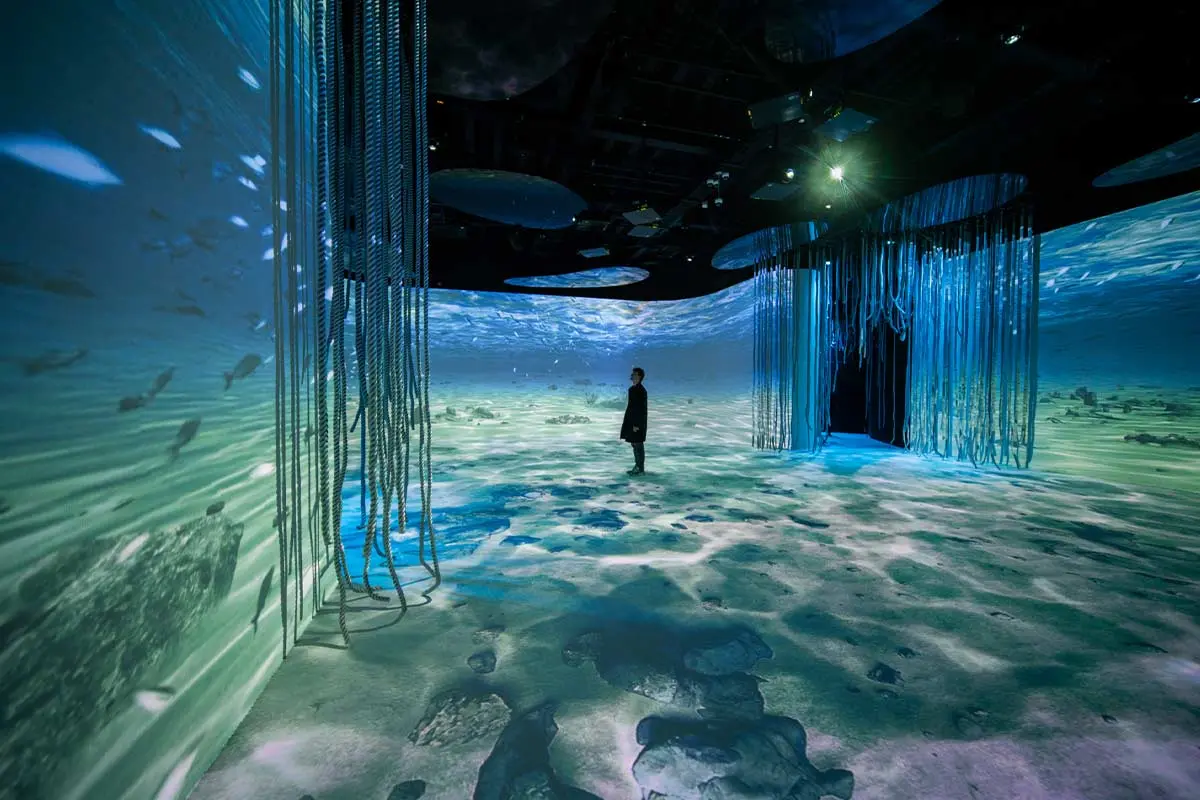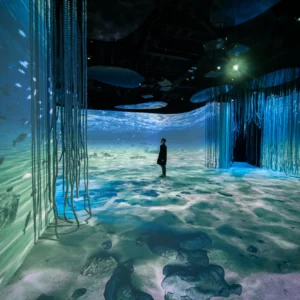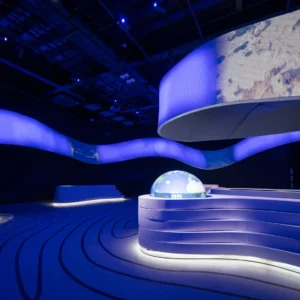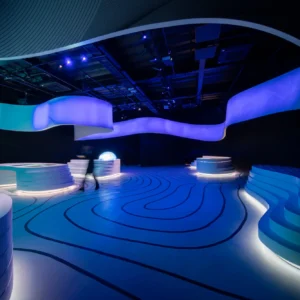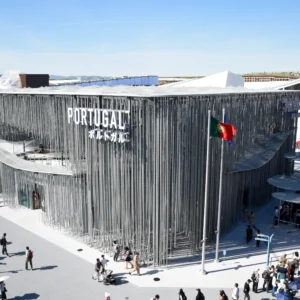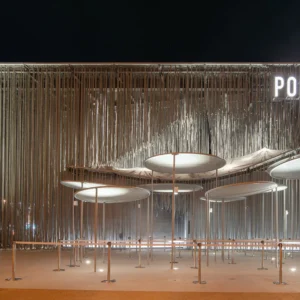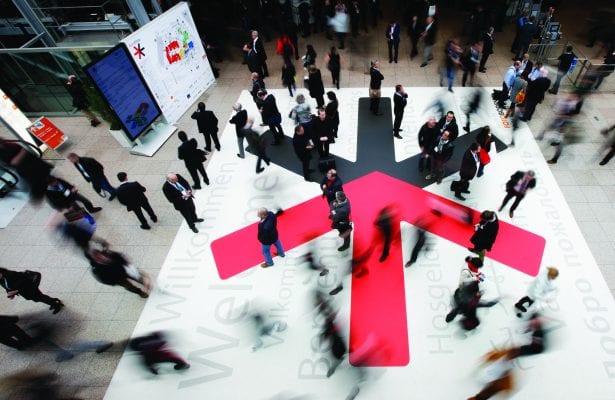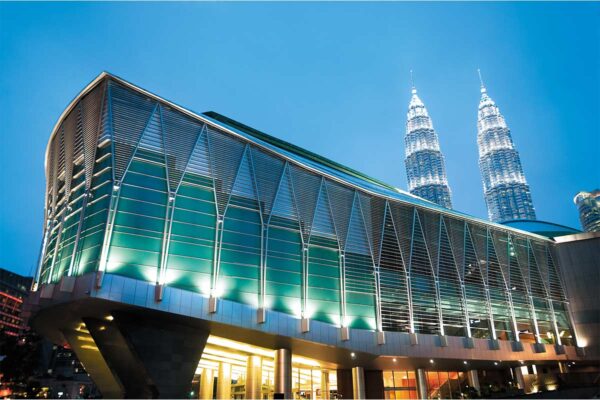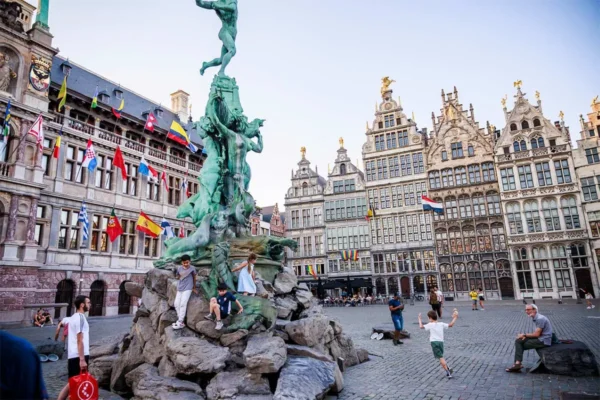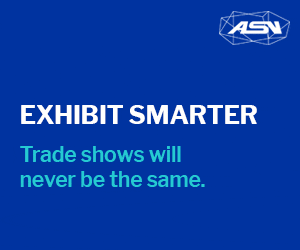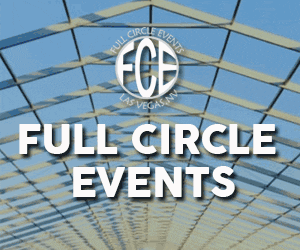A Live Event Built From Light, Sound, and Storytelling
submitted by ON Projeções
Inside the design, integration, and execution of one of the Expo’s most visited and technically ambitious pavilions.
Lisbon / Osaka — When the doors of the Portugal Pavilion at Expo 2025 Osaka opened, visitors were met not with artifacts or objects, but with an all-encompassing audiovisual environment. Designed by architect Kengo Kuma, the pavilion is an immersive journey shaped by projection, light, and spatial sound—an event in itself, delivered daily to thousands.
Behind this daily performance lies the work of On Projeções, an international provider of audiovisual solutions with operational hubs in Brazil and Portugal. Contracted by Rimond SRL, the general contractor for the project, On Projeções was responsible for the complete design, integration, and daily operation of all AVL systems. The conceptual development and exhibition design were led by MUSE – Museums & Expos, a company specialized in curating museum and cultural projects.
From the earliest stages of planning to the daily show control during the six-month event, On Projeções handled an end-to-end technical scope, ensuring that all content delivery systems were installed, programmed, and fully operational. The Pavilion is entirely driven by audiovisual content—there are no physical exhibits or artifacts—making the system design not just complementary, but absolutely essential.
“We knew from the beginning that the visitor experience would rely 100% on technology,” said Hugo Rodrigues, CEO of On Projeções. “That meant every detail of projection, lighting, and sound had to function as both infrastructure and narrative device.”
From immersive design to daily performance
The Pavilion, themed around “The Ocean, the Blue Dialogue,” follows a visitor path across two main rooms and several cultural and commercial spaces. Visitors begin their journey in a sound-designed waiting area before moving into Room 1, where five thematic “islands” explore maritime heritage, language, biodiversity, and cultural ties with Japan through video, light, and interactive surfaces.
The second room offers the sensory climax. With 360º projection on curved walls and floor, synchronized moving lights, and spatial audio, it invites guests to sit, reflect, and absorb a message from “the ocean” itself. Technically, Room 2 required precise calibration of 16 laser projectors, full control of lighting effects, and a Watchout-based automation system. The immersive Room 2—considered one of the most complex AVL spaces at the Expo—required pixel-perfect alignment across multiple surfaces, dynamic light scenes, and 360º spatial sound, all orchestrated through a fully integrated and touch-controlled system built to perform reliably throughout the six-month exhibition.
“It’s not just a room with projections—it’s a fully integrated space where light, video, and sound operate as one,” added Rodrigues. “To achieve that level of cohesion, we built a 3D model of the room and simulated every detail before stepping on-site.”
Every piece of AV equipment in the pavilion was sourced new in Portugal and shipped to Japan in over 20 pallets—around 4 tons in total. The system was custom built to comply with both Portuguese and Japanese standards and installed during a compressed timeline in early 2025, under challenging site conditions and weather.
Room after room was treated as a stage. Soundscapes, projectors, touchscreens, lighting arrays, and control systems were tested and integrated as one coherent organism. On Projeções used a tablet-based control system that allows all AVL elements—lighting, audio, and video—to be operated seamlessly by non-specialist staff on-site.
Beyond AV: A role in event execution
On’s responsibilities extended beyond the technical. When system adjustments were needed on-site—whether related to LED fitting or ventilation—the team stepped in to resolve issues and keep the Pavilion’s schedule intact. They also supported the programming and live production of events such as concerts, film screenings, and diplomatic receptions.
“Beyond the technical scope, On’s team played a central role in problem-solving across disciplines—coordinating with scenographers, stepping in to resolve structural setbacks, and supporting event production for live shows and diplomatic visits,” Rodrigues said. “Our ability to bridge gaps between technical design, content deployment, and real-time execution was instrumental to the Pavilion’s success.”
That operational flexibility extended to their preventive maintenance strategy. Redundant systems, hot spares, and a resident technical team were established to ensure daily operations remained smooth and uninterrupted. From touchscreen monitors to spatial sound and mapping projectors, the system was designed for reliable, repeatable performance.
The team also had to adapt to local customs and regulations. In Japan, for example, no work boots or shoes are allowed indoors; On’s technicians installed complex AV systems while wearing slippers or barefoot in near-zero temperatures. The absence of public trash bins meant carrying waste back to accommodations, and dietary adjustments were needed throughout the two-month stay. These details, while small, shaped a deeper understanding of cultural context and professionalism.
Designed for cultural and diplomatic events
While the immersive rooms are the draw for general visitors, the Pavilion also hosts cultural, commercial, and diplomatic functions. The restaurant and panoramic terrace are equipped with background sound systems for events, while a multipurpose room supports conferences, screenings, and high-level delegations. It features projection mapping on a curved stage wall, live streaming cameras, full audio mixing, and infrared interpretation systems.
From this space, Portugal has hosted a range of gatherings since the Expo began—from national day ceremonies to innovation showcases—each supported by the same AVL backbone that underpins the daily visitor experience.
By early May, the Portugal Pavilion had already welcomed over 200,000 visitors. But the numbers only tell part of the story. The Pavilion has become an example of how AVL systems, when treated as narrative infrastructure, can elevate an exhibition into a live event—repeated, adapted, and experienced anew each day.
As the Expo continues into the fall, the Portugal Pavilion stands as a reference not just in cultural storytelling, but in event infrastructure design—where AVL is not an add-on, but the architecture of the experience itself.
About On Projeções
On Projeções is a leading creative provider of visual technologies, specializing in the design and execution of immersive audiovisual experiences across Latin America, Europe, and other international markets. With over 35 years of expertise, the company delivers innovative solutions for a diverse range of projects, including immersive installations, projection mapping, corporate environments, virtual reality settings, and large-scale events. On Projeções is renowned for its ability to transform spaces into engaging, sensorial experiences that connect brands, organizations, and audiences. Headquartered in São Paulo, Brazil, with additional offices in Rio de Janeiro, Belo Horizonte, and Lisbon, On Projeções combines cutting-edge technology with creative vision to bring complex audiovisual projects to life. The company’s portfolio includes collaborations with prominent cultural institutions, corporate clients, and international exhibitions, reflecting its commitment to excellence and innovation in the field of visual technologies. Visit onprojecoes.com






